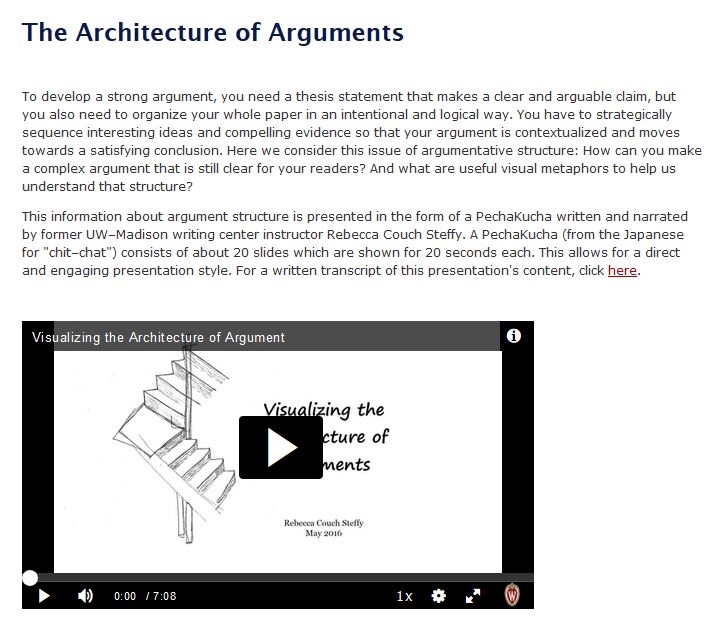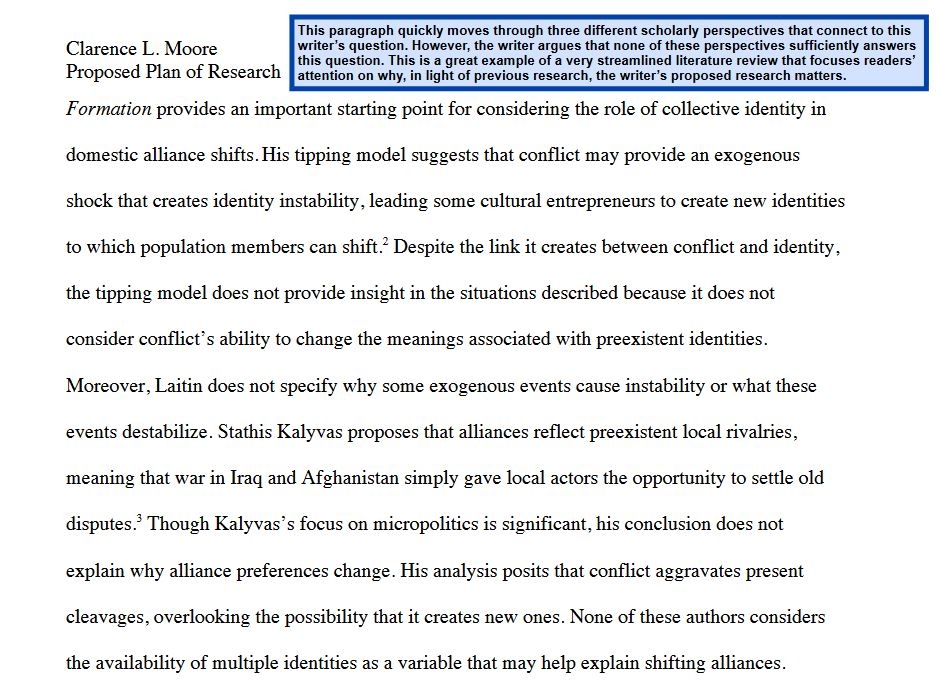By Bradley Hughes

I always think that strong writing centers have core principles and commitments and passions at (and in) their hearts. Our Writing Center at the University of Wisconsin-Madison, for example, is all about a few core ideas, values, and commitments—we’re about supporting high-level writing across all academic disciplines, writing which is absolutely central to learning and to research across the university and in the professional and civic and non-profit worlds our graduates will enter (I always say that research universities really do run on writing); we’re about supporting ALL student-writers, from undergraduates through advanced doctoral students, from every discipline, from all kinds of backgrounds; we’re about dialogue—or talk—about writing in progress—smart, sustained, patient, slow talk and listening; we’re about social justice; we’re about creating a learning culture, not only for students but for our tutoring staff; we’re about programs and pedagogy influenced by the latest theory and research in composition and rhetoric and in writing center studies; we’re about flexibility and experimentation; and we’re about collaboration, about building and sustaining partnerships with students, faculty, staff, and programs across our university, in our city and state, and with with other universities around the world. Although this post focuses on The Writer’s Handbook in our online writing center, it’s really about these larger goals and values and commitments.
As my colleague Maggie Hamper argued powerfully in a post on our blog last week, our online writing center helps in crucial ways as we try to support ALL writers and faculty. And as I explained in a history of our online writing center, I’m a big believer in convergence—seeing online instruction as integral to and completely inter-woven with our in-person instruction. In this post, I’d like to focus on a particular part of our online writing center—our large Writer’s Handbook—which features hundreds of pages of reference materials about academic and professional writing. All of these materials have been developed by members of the Writing Center’s staff here, over the course of decades (our online writing center is over 20 years old, and our center is nearing its 50th anniversary). The reference materials in that handbook are used by hundreds of thousands of students around the US and around the world **each month,** and you might not believe how many faculty, teaching assistants, teachers, and librarians link their students to and endorse those reference materials from across our university and from all around the world.

In this post I’d like to showcase what’s new in The Writer’s Handbook in our Online Writing Center at the University of Wisconsin-Madison and offer a behind-the-scenes look at how we create new reference materials for university writers and explain the principles that guide our development of those reference materials about writing.
As we do every summer, in the summer of 2017 we added a significant number of new reference materials to the hundreds of pages already in The Writer’s Handbook:
- Writing an Effective Blog Post
- Planning and Writing a Grant Proposal
- Writing a Summary or Rhetorical Précis to Analyze Nonfiction Texts
- CV Writing Tips
- Using Gender-Neutral Pronouns in Academic Writing
- MLA Documentation, Based on the 8th (2016) Edition
- The Architecture of Arguments
- Revising an Argumentative Paper
- Revision Strategies for Longer Projects
We really hope that you will sample these new materials and tell us what you think by adding a comment below!




And in recent years, we added new sections on
- IEEE documentation (a documentation system used in engineering and computer science)
- Resumes
- Close Reading for Literary Analysis
- Creating Research Posters
- Introductions
- Conclusions
- Reverse Outlines
- Writing Structured Paragraphs
Those new sections of our handbook joined many other pages, including these long-time favorites:
- Quoting, Paraphrasing, and Acknowledging Sources and Avoiding Plagiarism
- APA Documentation
- Writing Clear, Concise, Direct Sentences
- Writing Annotated Bibliographies
- Integrating Quotations from Literary Texts into Literary Analysis Papers
- Reading a Book to Review It
- Transitional Words and Phrases
- Peer Review
- 12 Common Errors: An Editing Checklist
- How to Read a Poem
- And guides to many other documentation systems—the Council of Science Editors, Chicago/Turabian, Numbered References in the Sciences . . .
Our Guiding Principles for Developing Handbook Materials
As we develop new materials for our online Writer’s Handbook, we try to follow certain principles:
- We want to create consistently high-quality materials, ones that students AND faculty and community members can truly learn from and rely on and that faculty can recommend with confidence.
- We want our materials to be informed by the latest theory and research on academic and professional writing. And we want the content to reflect some of the real complexities of academic writing, avoiding the reductiveness of many handbooks.
- We want the content and advice to be (surprise, surprise) accurate, rigorously researched, and trustworthy.
- We are committed to creating original materials.
- We want to teach about high-level university writing at the undergraduate and graduate levels, and we want to illustrate that kind of writing through real examples written by students and faculty at our university. Too many print and online writing handbooks are pitched at too low a level.
- We want to teach about and represent a wide variety of disciplines, consistent with our writing center’s mission to support a strong culture of writing across the curriculum.
- We want individual handbook sections to strike a good balance between comprehensiveness and efficiency. We try to create materials that are deep enough to (at least begin to) do justice to a complex rhetorical topic, but not too long that no one will ever read or use them. As anyone who has developed reference materials about writing knows, it’s tricky to decide how fully to treat a topic and how honest to be about nuances and exceptions. In our materials, we know that we have not always struck that right balance.
- We want to design materials that match how people actually read on the web. As former colleagues Les Howles, Albert Sheen, and I have explained in an article about writing for the web, we understand that people looking for information on the web behave in a predictable—and understandable—way: they “skip, scan, retrieve, and leave.” They are not necessarily on our web pages looking to learn about a writing topic “just in case,” but rather they are there to get information “just in time” in order to help with a particular writing task they are doing right then. Although we still have—admittedly—too much text and too much explanation on many of our handbook pages, we try to make material skimmable, with headings and tables providing advance organizers and with highlighted text to help readers anticipate what’s on a page, to skim, and to find specific information they are looking for. We are aiming to meet immediate needs for specific information AND to blend that with longer, fuller prose discussions of complex topics—inviting readers to learn more.
- Because many people learn best from examples, we very intentionally illustrate principles with high-quality samples.
- Whenever possible, we have taken the time to gather local samples, written by UW-Madison students and faculty. The sample resumes on our site come from UW-Madison students, the sample grant proposals come from UW-Madison students and faculty, the sample research posters come from UW-Madison students, and even the sample citations in all of our handbook sections about many different documentation systems feature publications by UW-Madison faculty and students. We choose local samples in order to showcase the great writing done at our university. And we do that in hopes of motivating student-writers to believe that they too can write strong thesis statements, well-designed research posters, great grant proposals, persuasive resumes, and publishable articles and books.
- We take the time to have multiple colleagues review all of our draft handbook materials, and we revise all of our handbook materials extensively and edit them carefully before we publish them. We know that it takes substantial time to draft and to revise and to consider carefully how to meet our readers’ needs and to communicate well about complex concepts.
- We listen carefully to the feedback that we receive from the many publics who use our handbook materials. We frequently receive suggestions and corrections (most of the comments are kind:-)), and we are always looking to improve everything we have written.
- We have student tutors on our staff take the lead in developing handbook materials, because we are deeply committed to creating all kinds of good learning opportunities for everyone on our staff.
Many, Many Authors and Reviewers

Like everything we do in our writing center programs, creating new content for our online Writer’s Handbook is a collaborative effort. Huge thanks to the two most recent coordinators of our online writing center, who took the lead in developing and writing and revising and designing and publishing the latest new materials: Dominique Bourg Hacker and Matthew Fledderjohann and the current online coordinator, Maggie Bertucci Hamper. Other authors who have contributed in the past few years: Neil Simpkins, Nancy Linh Karls, Clarence Moore, Vanessa Lauber, Jennifer Fandel, Rebecca Couch Steffy, Kate Vieira, Elisabeth Miller, Leah Misemer, Jessie Gurd, Mike Shapiro, Christopher Syrnyk, Sarah Iovan. . . .
Reflections from a Recent Developer of Our Writer’s Handbook
I asked Matthew Fledderjohann, the 2016-17 coordinator of our Online Writing Center who created many of the newest materials for our Writer’s Handbook, to take us behind the scenes, to describe what it was like to develop these instructional materials:

“Generating interesting online content that’s both engaging and useful for graduate and undergraduate student writers requires sustained and dedicated time and energy. It took me 20 hours a week for eight weeks in the summer to create four new resources, publish four pages others had written, and update one section. I found that a substantial amount of this time was spent responding to one of the primary challenges of this project: distinguishing our content from the vast collection of similar resources available online and in writing handbooks. Searching “writing a CV” generates over half a million Google results; libraries devote entire sections to grant writing guides. Given this mass of existing information, what did we have to contribute?
Brad encouraged me to relate our contribution to our audience. All through the writing process, we thought specifically about how this information could fit within our particular context. We asked ourselves questions like, ‘What kinds of grants do UW-Madison students apply for?’ To connect to this community, we sought advice from local experts and samples from successful UW-Madison students, faculty, and staff in order to ground our recommendations in real-life writing. This required me to do things like compose and annotate a rhetorical precis for UW-Madison Professor William Cronon’s “The Trouble with Wilderness” to show readers how summarizing an argument can assist with comprehension and analysis. As much as possible, our online resources situate various writing tasks within the resources and expectations of this university. And while these expectations are applicable beyond this context, thinking locally allowed us to go beyond a repetition of established advice by addressing and illustrating particular concerns.


Thanks, Brad, for this fabulous post. This year, I’ve seen how widely used our online Writer’s Handbook is and the diverse audiences it is able to reach, from students at UW-Madison and beyond, instructors developing course materials, and lots of readers not associated with a university, but hungry to know more about many dimensions of writing.
I really do think that it’s these core principles you’ve outlined that makes our online handbook both homegrown, specific to UW-Madison, and—at the same time—relevant and meaningful for a broader public audience.
One thing I really like that both you and Matthew pointed out is how to make the Online Writing Center Handbook stand out from other sources online. I’ve really appreciated the emphasis on local samples from UW-Madison students and faculty as one way to separate the online handbook from others. I to think it brings readers into the university’s writing community, not only for readers from other institutions but students here at UW-Madison, too. That shows they are part of this community and can become role models themselves for future students. I love how the handbook is more than just a place for advice; it helps foster relationships.
Brad, I feel like this blog post could be effectively revised into a new handbook resource entitled “Writing Effective and Engaging Writing Handbook Resources”! And if this post was a handbook resource, it would have applied much of its own advice about developing such materials!
Also, anyone interested in additional backstory on one of our new resources (“Using Gender-Neutral Pronouns in Academic Writing”) should check out Neil’s post from October (https://writing.wisc.edu/blog/writing-the-body-writing-centers-and-pronouns/).
A wonderful post Brad. And thanks to all who have contributed over the years to the Handbook. I appreciate the new pages, too. (I’m now updating my CV! Thanks!) As a past contributor to the Writer’s Handbook, one aspect that is worth appreciating is what I call “The Economist” approach to the Handbook. If you look hard enough, you will never see an author credited for a particular section of the Handbook. Why? Because authorship takes a backseat to the value of the Handbook as a project that values writing and the work, the process, and the particular needs of those who write. I have always enjoyed being “in the know” with respect to the fine work my colleagues have produced, page by page, by page. You remember that page? You know who you are! The other aspect to which I can wholeheartedly attest is that, yes, at Oregon Tech, where I teach FYC, every term, and I do mean every term, as part of a “writing resources” page I produce for my students, without fail (did I mention I do this regularly?), I link to the UW-Madison Online Writer’s Handbook, and point out particular pages that may be of use to my students all along the writing process: I also teach them how to use the site as a resource (now with new-and-improved pages!!!), so they become accustomed to thinking about the different ways they could address and learn more about their own writing, long after my classes with them. I also would just like to second Matthew Fledderjohann’s motion of turning this post into a “new handbook resource”: a great idea.
Thank you.
Christopher J. Syrnyk
Associate Professor, Communication
Director, Oregon Tech Honors Program
Thanks so much for this post, Brad. What is truly remarkable about the handbook is not just that it contributes to this larger culture of writing that the writing center and WAC programs are at the heart of–but that it is continually undergoing revision and updating. I remember working on it as a graduate student! It is an exemplar of a collaborative resource that evolves with the changing nature of writing, and with the new demands on writers in all areas. What a rich gift. What a relevant resource. Thank you!
I encountered this online handbook long before I knew I would be a graduate student in the comp/rhet program at UW-Madison (and work in the Writing Center that produced this awesome resource!).
I was an MA student and a novice first-year writing instructor, searching online for resources to help with a lesson on paraphrasing. I came across the Quoting and Paraphrasing handout Brad mentioned as a long-time favorite. I still recall how impressed I was with the handout’s clarity, accuracy, professionalism, and especially the examples–all principles Brad mentioned.
I’ts just one of the countless examples of the range and impact of these valuable resources, which reflect the commitment and collaborative efforts of so many talented people. Thanks to all who’ve contributed to them, especially Brad!
Dave Stock
Coordinator, BYU Writing Center
(former TA Assistant Director, UW-Madison Writing Center)
I have used the UW Writing Center Handbook countless times; have recommended it to my students countless times; and have benefitted continually from the smart, reliable, clearly written blog entries on every thing from planning a research paper, to writing a thesis statement, to using sources, to decoding the mysteries of MLA and APA styles. The Handbook is always part of my toolkit when I teach writing and when I write myself.
Thanks, Brad, and all the other many contributors over the years who have helped to make this the premier go-to website for ideas and inspiration on writing and the writing process!
John Duffy
Associate Professor of English
Francis O’Malley Director of the University Writing Program
University of Notre Dame
I direct my students to the Handbook resources every semester! Probably the page/handout that I use the most with students is Quoting, Paraphrasing, and Acknowledging Sources and Avoiding Plagiarism. I remember using it as the central part of a WC Outreach lesson with EFL graduate students at UW, and most recently I used it with a few College of Business students, who, let’s say, weren’t, avoiding plagiarism as well as they could. 😉 I’m looking forward to exploring the newer materials!
Thanks, Brad!
Brad, thank you for this well-illustrated reminder of one of the quietest but most significant contributions the Writing Center makes! Although we justly prioritize talk in the work writing centers do, I wonder in retrospect if, during my seven wonderful years as an instructor there, I forgot that the product of writing can have as much value as its process.
You’ve chosen examples that highlight a diversity in the the needs and curiosities of the Handbook’s audience (to say nothing of the expertise of the Handbook’s contributors). It is so rare as writing teachers that we get the opportunity to address, in one page, one audience’s grammatical needs and another’s curiosity about socio-linguistic history. Neil’s glorious page on gender-neutral pronouns could be a case study in Handbook writing.
But, in the interest of the endless editing that goes into the work of the Handbook, and for the sake of playing devil’s advocate to Professor Syrnyk’s comments above, I wonder what cost attaches to the timeless anonymity of this work.
I have always appreciated transparency in sources of advice. It helps me to know that any given page on the Purdue OWL was edited on a given date by a named person who I could, in theory, track down and contextualize. A writer should be able to decide whether to devalue advice based on its age. I worry that the a nameless, timeless Handbook entries may read as a Voice of All Truth, especially in the context of culturally situated questions about language.
Mike A. Shapiro
Technical Communication Instructor
UW–Madison College of Engineering
[…] Behind the Scenes at the UW-Madison Writing Center’s Online Writer’s Handbook […]